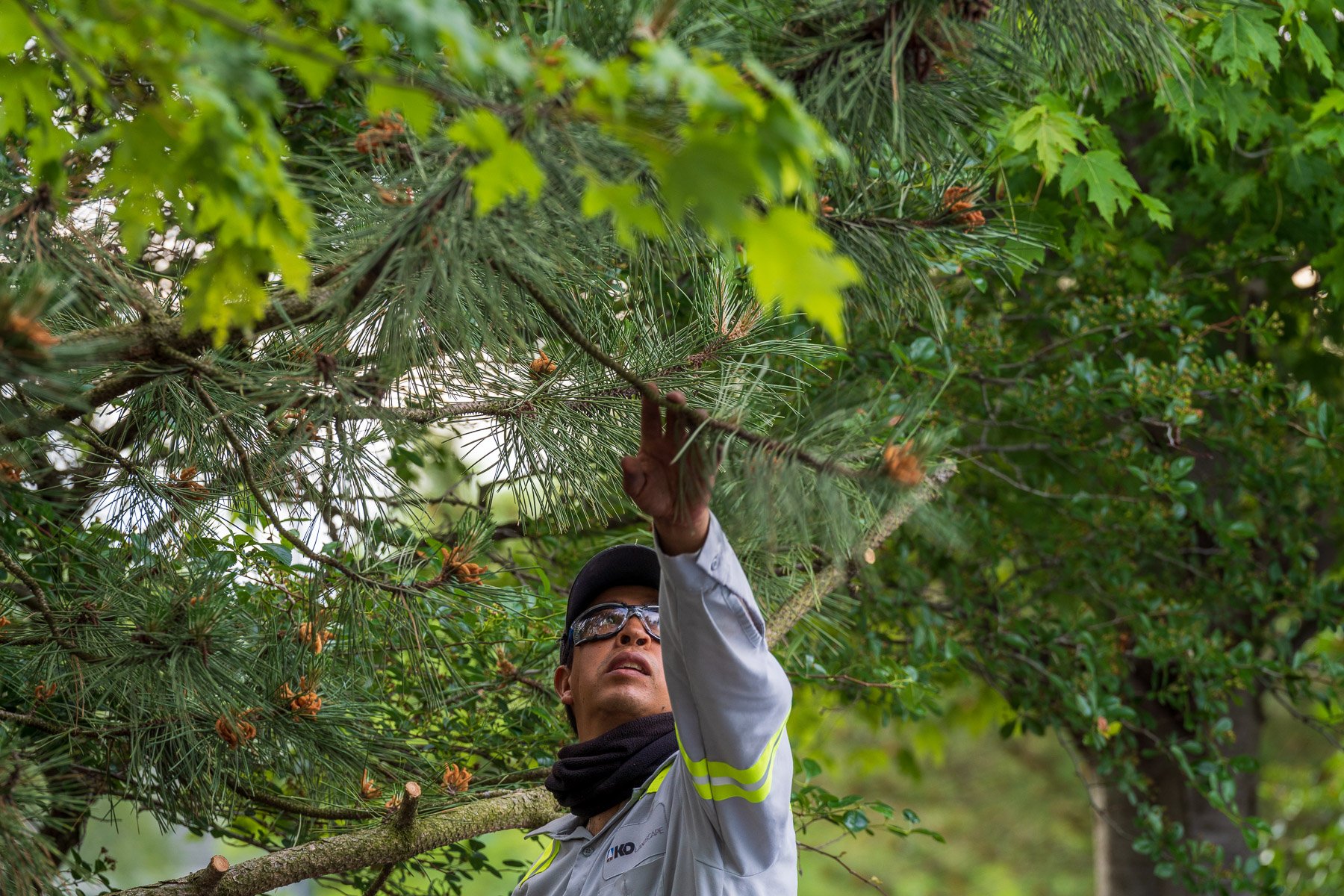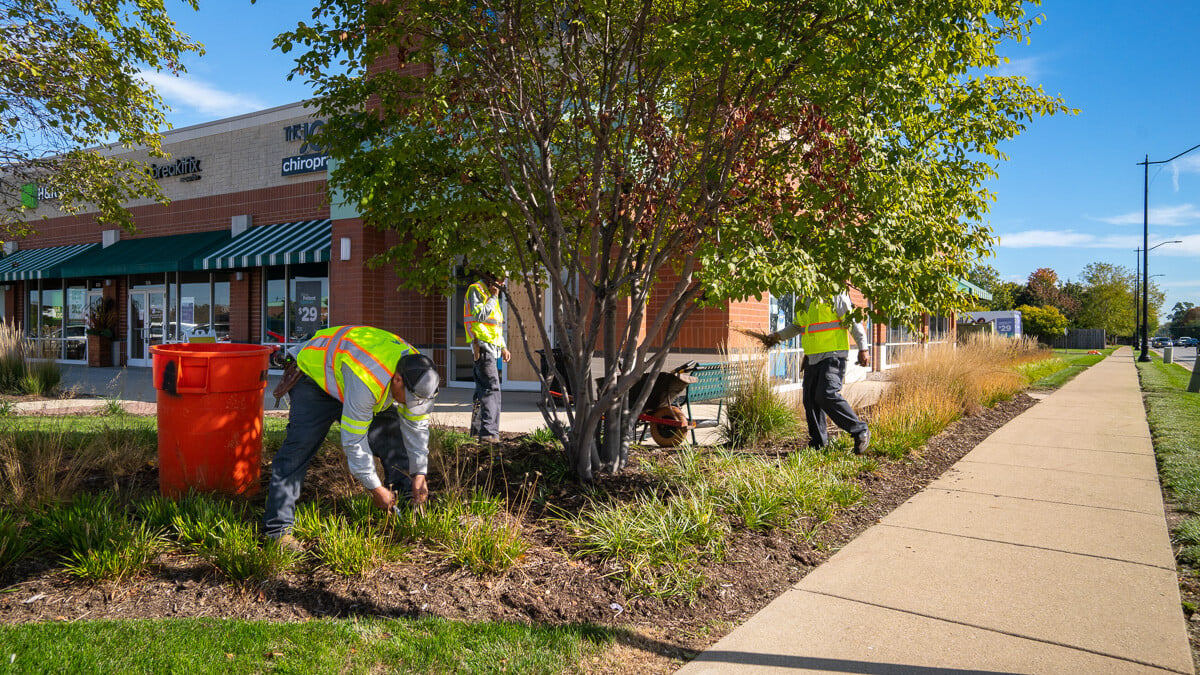Trees and shrubs bring more than just color to your commercial property in Greater Chicago.
They add color and greenery that people can enjoy while shopping at your retail center or working at your office park. They can ease the nerves and worries of your healthcare patients and stressed-out medical professionals. They can bring color and texture to your industrial facility or homeowners’ association grounds.
In all of these commercial property types, trees and shrubs offer numerous additional benefits. Placed correctly and maintained well, these plants can lower energy bills, manage stormwater by reducing erosion and flooding, sequester carbon, and provide food and shelter for wildlife.
Trees and shrubs can even increase spending at your retail center or boost recruitment and retention at your multifamily property.
But to continue providing these benefits, your trees and shrubs must remain healthy and strong.
In addition to proper water and fertilization, your trees and shrubs require regular pruning. Some trimmings occur during the growing season to keep plants tidy and remove any dead, dying, or broken branches. Proper commercial pruning techniques not only enhance the aesthetic appeal of commercial properties but also promote the long-term health and vitality of trees, shrubs, and ornamental plants.
Let’s examine plant pruning techniques and discuss how they work, so you can better understand their purposes and numerous benefits.
Summer Pruning in Greater Chicago Commercial Landscapes
Summer pruning serves multiple purposes in commercial landscape maintenance.
It helps shape and define the visual appearance of trees and shrubs, creating a neat and manicured look that enhances the property's overall aesthetic appeal.

Additionally, summer pruning promotes air circulation and sunlight penetration within the canopy, reducing the risk of disease and pest infestations. By removing dead or diseased branches and encouraging new growth, summer pruning rejuvenates plants and stimulates vigorous, healthy growth.
Here, we’ll dive deeper into the important techniques involved in warm-weather plant pruning.
1. The Right Tools to Do The Job
You want to hire a commercial landscape professional who uses the right tools to do summer pruning work. This is an important first step.
These tools include high-quality pruning shears, loppers, pruning saws, and pole pruners, all of which are suitable for the size and type of plants on your site.
Sharp, well-maintained tools ensure clean cuts and minimize stress on plants, promoting faster healing and reducing the risk of disease transmission.
2. Deadheading
Remove spent flowers from annuals, perennials, and flowering shrubs to encourage continuous blooming throughout the summer months is one aspect of warm-weather plant pruning.
Deadheading redirects the plant's energy from seed production to new flower production, prolonging the flowering period and enhancing visual appeal.
3. Thinning and Shaping
Summer pruning also involves thinning out dense tree canopies to improve air circulation and reduce wind resistance, thereby mitigating the risk of storm damage.
This process involves removing crossing or rubbing branches, water sprouts, and suckers to maintain a well-balanced and structurally sound canopy. Proper pruning cuts minimize damage and promote rapid healing.
4. Selective Shrub Pruning
As part of proper plant pruning techniques, your commercial landscape professional will prune shrubs to maintain the desired size and shape, removing overgrown or leggy branches to promote dense, compact growth.
Your shrubs can maintain their natural form by removing any damaged, diseased, or dead wood. But you’ll want to pay attention to flowering shrubs to avoid cutting off next year's flower buds.
5. Training Plants to Grow a Certain Way
Another proper plant pruning technique involves guiding the growth of flowering vines.
To achieve this, selectively prune to encourage upward growth and prevent overcrowding. Remove excessive growth and redirect vines along trellises or support structures to create visually appealing displays on your commercial landscape.
Also, prune back overly vigorous shoots to maintain a manageable size and prevent damage to structures.
6. Renovation Pruning
For neglected or overgrown commercial landscapes, summer pruning offers an opportunity for renovation pruning to rejuvenate plants and restore their health and vigor.
To achieve this, gradually remove overgrown or damaged branches over multiple seasons, minimizing stress on the plants and promoting gradual recovery.
Summer Pruning Best Practices
While using these proper plant pruning techniques, you also want to make sure your commercial grounds management team follows some best practices.
First, these professionals will avoid pruning during periods of extreme heat or drought to minimize stress on plants.
They will make clean cuts at correct angles to promote rapid healing.

They will also disinfect pruning tools between cuts and between trees and shrubs to prevent the spread of diseases.
Finally, they’ll monitor your trees and shrubs regularly throughout the summer to identify and address any pruning needs promptly.
Don’t Forget That You Have Summer Pruning As An Option For Your Greater Chicago Commercial Property
You know you want to take care of your commercial property all year round, including trees and shrubs.
While it can be easy to overlook the possibility of summer pruning, being aware of it could be helpful and transformative for your commercial facility.
We understand that you have numerous concerns when managing your commercial property. If you have questions about warm-weather plant pruning or would like our assistance with your property, please let KD Landscape know. We can help answer all of your questions, saving you time, money, and headaches along the way.
Want to learn more about our commercial property services in Greater Chicago, including summer pruning? Get started today with a consultation. We’ll review your options together so you can feel confident and make a great choice.









